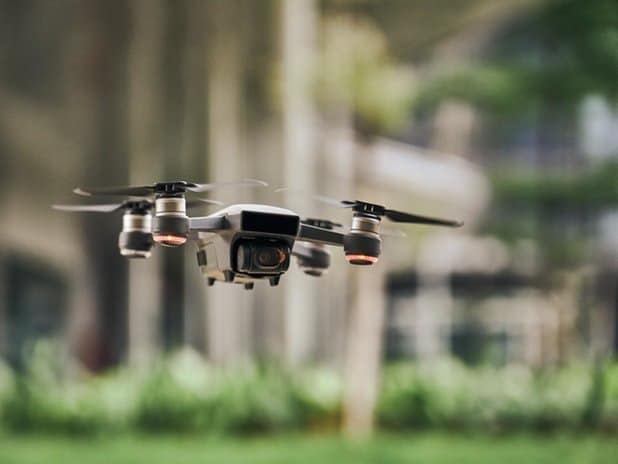Delivery is becoming more important across the commerce space, and this importance is most evident in e-commerce, which strongly depends on a quality, on-time delivery experience for satisfied end customers.
Note that quality is not always synonymous with speed when talking about delivery. In a revealing 2016 AlixPartners study, researchers found that 74% of people are willing to wait longer for delivery if it means their order will ship for free.
The crux of this is that offering a range of attractive delivery options appears to be the factor that delivers—pun entirely intended—a competitive edge. However, getting the logistics of delivery right is not an easy task. Many e-commerce businesses are turning towards dedicated delivery logistics solutions to ensure the quality delivery experience demanded by modern customers.
Improvements in technology, coupled with enhanced pressure to get delivery right, have impacted some of the latest delivery trends. This article informs you on five delivery trends everyone is talking about.
Third-Party Delivery
Third-party delivery refers to the outsourcing of all delivery logistics to a third-party company. For example, an e-Commerce store might outsource its delivery logistics to FedEx Supply Chain and pay them a fee for this.
The trend of opting for a third-party delivery service is particularly pertinent in the restaurant industry, and many eateries now partner with companies such as GrubHub and Uber Eats to get food to customers.
For e-Commerce companies, third-party delivery is an attractive option that negates the need for delivery drivers and a fleet of expensive delivery vehicles. A potential problem with third-party versus in-house delivery is that it introduces additional complexities into the logistical concerns of getting products from your store to end customers. Furthermore, choosing the wrong provider could be catastrophic in terms of company reputation if something was to go wrong with the deliveries for multiple customers.
In-Home Delivery Services

According to the statistics, 67% of Millennials and 56% of Gen Xers prefer to shop on online rather than in-store. While this is clearly excellent news for e-Commerce businesses, it also presents a dilemma.
Given that delivery represents the only channel for face-to-face communication with customers, can anything be done to better engage with people and further improve the quality of not just the delivery experience, but the overall customer experience?
Both e-Commerce retailers and traditional brick and mortar stores believe the answer is yes, and that it lies in the growing trend of in-home delivery services. Online electronics retailer Enjoy, for example, not only sells electronic products, it offers to deliver and assemble the products in peoples’ homes. Furthermore, an Enjoy technician will briefly instruct customers on how to use their newly purchased goods.
Ikea is doing similar after its acquisition by TaskRabbit. Now, not only do you get your home furniture delivered by Ikea; a local TaskRabbit handyman will assemble it for you. Expect this trend of in-home delivery services to expand even more as companies look to innovate and personalize the delivery experience.
Delivery Bots

Advancements in artificial intelligence technologies have paved the way for the latest high-tech delivery trend in the form of delivery robots. Robby, for example, is a last-mile delivery robot undergoing extensive testing in California, and it is designed to navigate the hilly terrain.
This specific delivery bot is part of a growing trend to take humans and traffic out of last-mile fulfillment. Amazon made a patent application for its own delivery bot in January 2018 as part of its own strategy to solve the perennial “last mile delivery” conundrum.
The “last mile” is a term which refers to the final step of a product’s journey from business to the final delivery destination. This last mile normally covers the journey from a distribution center to a customer’s residence.
The last mile presents difficulties because it is this part of delivery that is most important to the end customer, and it needs to be perfect to meet high customer expectations. The problem is that it is often imperfect due to a slew of factors, some of which are difficult to predict, being unable to find the correct address missed delivery attempts due to customers not being home.
Delivery Drones

Amazon and UPS are deploying unmanned aerial vehicles—drones—to get parcels to customers faster than ever. This is a growing trend to meet the needs of the particular subset of online shoppers who demand same-day delivery. Using traditional modes of delivery, it is costly and difficult to meet such high demands for same day delivery.
Additionally, drone technology is also expected to grow in influence in terms of delivering goods to rural areas, replacing expensive traditional modes of delivery. It would be economic suicide to completely ignore rural customers for the majority of businesses, however, the logistics of getting products to such people requires leveraging modern technologies like drones.
Data-Optimized Delivery
The world of e-Commerce is currently in the throes of the Big Data era, in which businesses attempt to derive value from the massive amounts of information they collect, which has been generated by people who visit their online stores, engage with their brands on social media, and order goods.
In terms of its applicability to delivery, e-Commerce companies are starting to use Big Data analysis techniques to track and predict demand to ensure they are ready to provide customers with exactly the product they want at exactly the time they need it. It’s not infeasible that supply chains will be built based mostly on data forecasting. Coupled with machine learning algorithms and neural networks that can learn without explicit programming, delivery logistics inefficiencies could be reduced to near zero.
Wrap Up
The delivery trends everyone is talking about incorporate exciting technological advances and the availability of increasingly large quantities of data to address delivery logistics concerns. Also prominent in the discussion are topics such as in-home delivery services, which aim to promote brand loyalty by enhancing the delivery experience.
Overall, balancing costs while meeting demand with a high-quality delivery experience is imperative to the success of any e-Commerce delivery strategy, and the trends reflect that.
order fulfillment


fantastic put up, very informative. I wonder why the opposite experts of this
sector do not understand this. You must continue your writing.
I am confident, you've a huge readers' base already!
Nice post. I learn something new and challenging on websites I stumbleupon every day.
It's always useful to read through content from other writers and practice a
little something from their websites.
Thank you for sharing This article. Have a good content.
Ahhh finaly i found someone who has vast canvas of approach. Informative article. Tracking is also the main thing which make whole process hustle free.
Thank you author for such a nice blog. Keep it up.
Thank you for sharing this insightful information.